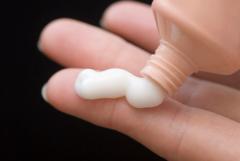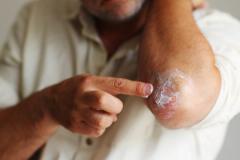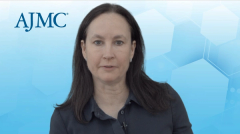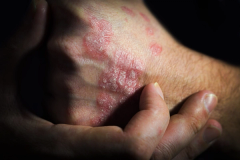
Dr Haley Naik Discusses Using Biologics and the Drug Pipeline for Hidradenitis Suppurativa
There are certain considerations when choosing which patient is the best fit for a biologic to treat hidradenitis suppurativa, said Haley Naik, MD, FAAD, associate professor of dermatology, University of California, San Francisco, School of Medicine.
This content was produced independently by The American Journal of Managed Care® and is not endorsed by the American Academy of Dermatology.
There are certain considerations when choosing which patient is the best fit for a biologic to treat hidradenitis suppurativa (HS), said Haley Naik, MD, FAAD, associate professor of dermatology, University of California, San Francisco, School of Medicine. She also discussed the pipeline for HS, including some anticipated approvals later this year.
Naik is presenting on medical management of HS with nonbiologic medication at the annual meeting of the American Academy of Dermatology.
Transcript
What considerations should be taken into account when choosing whether to manage hidradenitis suppurativa with a biologic or a nonbiologic treatment?
Biologics—and specifically adalimumab, which is FDA approved for HS, but even the newer biologics that are coming down the pipeline for HS management—are approved for moderate-to-severe disease. So, disease severity is certainly an important consideration to take into account when choosing to manage HS with a biologic.
I'd say those of us who care for these patients look at tunnel formation as an important marker of when to initiate biologic therapy, because tunnels under the skin, or dermal tunnels as we call them in dermatology, are permanent structures that signify tissue destruction. Once a person develops a tunnel in the context of HS that is not a reversible change. It's disfiguring and it is a sign of disease progression. I'd say that's another indication that a biologic may be appropriate for a particular patient.
Of course, you have to consider patient preferences and use shared decision-making before initiating a biologic. Then the other 2 considerations that I use in my own practice are, one, pain: HS patients have pain that seems to be multifactorial, but one of the main factors that contribute to HS pain is inflammatory disease–related pain. Biologics help control inflammation in HS, so if patients are exhibiting or reporting signs of inflammatory pain, then biologics may be consideration there. Then of course, you also have to consider comorbidities when thinking about prescribing biologics for HS patients.
There is one FDA-approved treatment for hidradenitis suppurativa. What is in the pipeline that you're keeping an eye on?
In February of this year, the 2 phase 3 studies of secukinumab for HS are published, and the results look quite positive. So, we're really looking forward to FDA approval, hopefully, of that agent later this year. There is also another IL [interleukin]-17 inhibitor for which we've seen phase 2 data and the phase 3 trials have been completed, and that drug is bimekizumab. And so, we're also looking forward to seeing more of that data and hopefully seeing approval for that therapy down the road.
There are studies of JAK [Janus kinase] inhibitors for HS that are underway—phase 3 studies. That's another interesting and compelling mechanism that we're excited to see come to fruition for HS.
Newsletter
Stay ahead of policy, cost, and value—subscribe to AJMC for expert insights at the intersection of clinical care and health economics.
























































































































